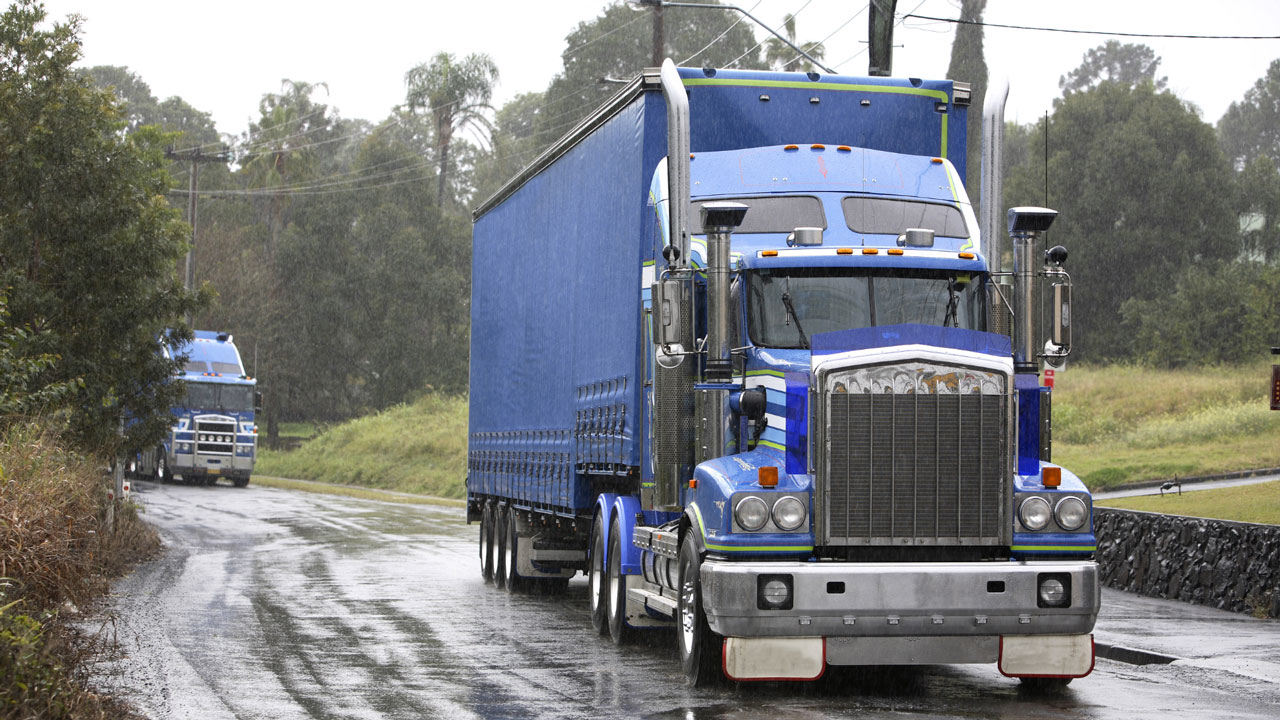
Preparing For The Unexpected: Big Rig Insurance and Emergency Response
The trucking industry in California, known for its unpredictability, requires robust preparedness strategies to handle unexpected incidents on the road. Commercial truck insurance and emergency response plans are pivotal in safeguarding against unforeseen events, ensuring business continuity, and providing financial stability in the aftermath of accidents or disasters.
This comprehensive guide explains the essential facets of big rig insurance, highlighting key coverages and elucidating the importance of being equipped for road emergencies.
The Importance Of Big Rig Insurance
Big rig insurance protects the assets and financial health of trucking businesses and independent operators. This specialized form of commercial truck insurance California caters to the unique risks faced by the trucking industry, offering coverage that spans liabilityA financial obligation or debt owed by an individual or business to another entity, typically result..., physical damage, cargo, and more. The essential coverages include:
- Physical Damage CoverageOften bundled with NTL, this covers damage to the truck itself when not in commercial use.: Essential for protecting the truck itself from damages arising from collisions, theft, vandalism, and other perils. Lenders often require it if the rig is financed and must stay in effect for the duration of the loan.
- Motor Truck Cargo Coverage: This coverage is mandated by federal law with a minimum of $5K, protecting the cargo from damages or loss during transit. Shippers might require higher limits.
- Non-Trucking Liability and BobtailThe act of driving a tractor without a trailer attached, commonly done by truck drivers when returni... Coverage: For situations when the truck is operated without dispatch or for personal use, these coverages provide protection against liabilities.
- Occupational Accident Coverage: Acts as a supplement to workers’ compensationA form of insurance providing wage replacement and medical benefits to employees injured in the cour..., offering coverage for long-term disability, accidental death, or dismemberment.
Each of these coverages is designed to address specific risks and scenarios that truckers may face, ensuring that both the operators and their assets are protected under various circumstances.
Preparing For Emergencies On The Road
Emergencies on the road, such as accidents, natural disasters, and other unexpected events, necessitate a well-thought-out response to minimize impacts and ensure safety. Preparedness involves understanding and planning for the challenges posed by road conditions, the availability and accessibility of emergency services, and effective interaction with other road users during incidents.
Creating a comprehensive emergency response plan that includes standard operating procedures (SOPs) for various scenarios is crucial. Training employees on these protocols ensures that everyone knows their role and how to act swiftly and efficiently in the face of emergencies. Additionally, incorporating regular breaks into schedules can help maintain driver alertness and reduce the risk of accidents, further enhancing road safety for everyone.
Road Conditions And Emergency Response For Big Rigs
Road conditions significantly impact the ability of big rigs to respond to emergencies. Factors such as precipitation, fog, pavement temperature, and water levels can alter traffic speed, increase travel time delays, and elevate accident risks. For instance, light rain or snow can reduce average freeway speeds by 3 to 13 percent, while heavy snow may decrease them by up to 40 percent. Low visibility situations cause speed reductions of 10 to 12 percent. Adverse weather contributes to over 1,235,000 weather-related crashes annually, underlining the importance of understanding and planning for these challenges.
Certification And Training In Emergency Response
Commercial truck drivers are required to undergo specific certification and training, including emergency response procedures. This training is vital for navigating adverse driving conditions like heavy wind, rain, or snow. Drivers are taught how to adjust to reduced visibility, maintain control during high winds, and safely navigate snow and ice.
The FMCSA provides guidelines on exemptions for driving in adverse conditions, allowing drivers to operate for extended hours under certain circumstances. This highlights the need for continuous learning and preparedness.
Interaction With Other Road Users During Emergencies
During emergencies, the interaction between big rigs and other road users is crucial. Maintaining a safe distance, using turn signals, and staying calm can prevent accidents. The three-second rule is recommended to ensure a safe distance between vehicles, increasing to five seconds in heavy rain and ten seconds on icy roads.
Proper signaling and avoiding road rage behaviors are emphasized for safety. These practices ensure better communication, understanding, and cooperation between big rigs and other road users during emergencies.
The Role Of Regular Breaks In Ensuring Safety
Taking regular breaks is critical for driver alertness and safety. It helps reduce the likelihood of emergencies and improves overall response. Under Hours of Service regulations, commercial motor vehicle drivers must take mandatory breaks to ensure they get enough rest. For example, a 30-minute break is required after eight hours of driving, and a 10- to 11-hour break before returning to duty.
Encouraging drivers to take additional breaks if they feel tired or impaired can significantly reduce at-fault accidents due to fatigue, enhancing safety for both the drivers and the public.
Emergency Services For Big Rigs
The availability of emergency services along major trucking routes is crucial for effective emergency planning and response. Laws such as 49 CFR 392.22 govern how big rigs should conduct themselves in emergencies, including correctly using hazard warning signal flashers and placing warning devices to alert other road users. These protocols ensure immediate steps are taken to prevent further accidents or complications, even when emergency services are on their way.
Moreover, states often issue commercial vehicleAny type of motor vehicle used for transporting goods or passengers for compensation, subject to var... travel restrictions in response to adverse weather conditions, highlighting the importance of understanding and complying with such directives for safety. For instance, during major winter storms, states like New Jersey, Connecticut, Delaware, Massachusetts, New York, Pennsylvania, and Rhode Island have implemented restrictions on commercial vehicle travel to ensure road safety and facilitate emergency responses.
These measures underscore the importance of knowing emergency protocols and restrictions, which can vary by state and situation, to effectively plan and respond to emergencies.
Standard Operating Procedures (SOPs) For Emergency Situations
Having clear and practiced Standard Operating Procedures (SOPs) for emergency situations is vital for the safety and efficiency of trucking operations. These SOPs guide drivers and staff on how to act in various emergency scenarios, including accidents, natural disasters, and adverse weather conditions. Training on these protocols ensures that everyone knows their role during an emergency, significantly improving the response effectiveness and safety.
The regulation detailing parking on the highway’s shoulder during emergencies underscores the importance of having specific procedures to follow to enhance safety and minimize risks.
Similarly, the widespread state-level travel restrictions for commercial vehicles during severe weather conditions necessitate SOPs that include checking weather forecasts, understanding state-specific travel restrictions, and knowing how to securely park the vehicle if caught in a storm. Such SOPs not only prepare drivers for immediate and effective action but also ensure compliance with legal requirements and enhance the overall safety of the trucking operation.
Prepare For The Unexpected With SoCal Truck Insurance
The intertwined realms of big rig insurance and emergency response form the backbone of safety and financial stability in the trucking industry. A nuanced understanding of commercial truck insurance coverages and a comprehensive emergency response plan empowers trucking professionals to navigate unforeseen challenges confidently. The discussed measures, from adhering to emergency services and regulations to implementing detailed SOPs, underscore the industry’s commitment to safety and preparedness. As we move forward, let these insights serve as a foundation for enhancing the resilience and operational integrity of trucking operations across the board.
Ready to elevate your trucking operation’s emergency preparedness and insurance strategy? Connect with SoCal Truck Insurance experts in California for personalized advice and commercial insurance solutions that safeguard your assets and operations.


